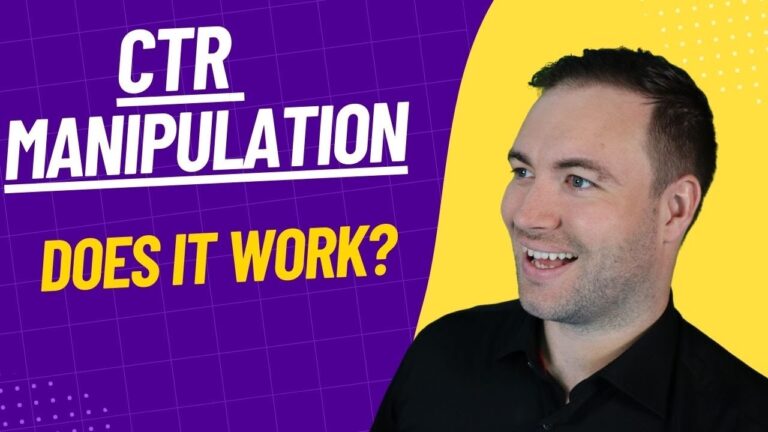Supercharge Your Link Building Efforts with LinkDaddy CTR Manipulation Experience
Supercharge Your Link Building Efforts with LinkDaddy CTR Manipulation Experience
Blog Article
Optimizing Organic Click-Through Fees With CTR Control
The optimization of natural click-through prices (CTR) is a nuanced venture that hinges on recognizing both user psychology and effective content discussion. The landscape is rife with false impressions and oversimplifications concerning what absolutely drives CTR.
Understanding Click-Through Fees
Understanding click-through rates (CTR) is essential for evaluating the effectiveness of internet marketing methods. CTR measures the percent of customers that click a particular link or ad compared to the overall variety of users that watch it. A higher CTR shows that the material is engaging and appropriate to the target market, while a reduced CTR may indicate a need for optimization.
To calculate CTR, split the number of clicks by the variety of impacts and increase by 100. For example, if an ad gets 300 clicks out of 10,000 perceptions, the CTR would certainly be 3%. This statistics is vital for evaluating various aspects of digital marketing, including search engine optimization (SEO), e-mail campaigns, and social media sites marketing.
Moreover, evaluating CTR assists marketers determine which approaches yield the very best outcomes and which require improvement. By concentrating on enhancing CTR, companies can enhance their content's visibility and effectiveness, bring about increased website traffic and potential conversions. Understanding the subtleties of CTR is fundamental for any type of marketing expert intending to enhance their on-line presence and optimize roi (ROI)

The Psychology of User Actions
Individual actions is considerably influenced by psychological factors that dictate just how individuals interact with on the internet content. Understanding these factors is necessary for optimizing click-through rates (CTR) in organic search results.
Emotional reactions also dramatically effect individual habits. Material that resonates psychologically can activate a sense of necessity or curiosity, motivating customers to click. In addition, social evidence-- such as user evaluations or ratings-- can improve depend on and encourage engagement, as individuals typically want to the habits of others to educate their own choices.
Additionally, the concept of deficiency can drive clicks - CTR Manipulation. Limited-time offers or special content develop an anxiety of losing out (FOMO), engaging individuals to act promptly. Comprehending these emotional chauffeurs makes it possible for marketers to create more engaging web content that reverberates with their target market
Effective CTR Adjustment Strategies
Leveraging emotional insights can significantly enhance click-through prices (CTR) through targeted control strategies. Among one of the most reliable techniques is using engaging headlines that evoke interest or necessity. Wording titles as inquiries or including numbers can attract more interest, motivating users to click.
An additional method entails optimizing meta descriptions to develop a feeling of relevance and immediacy. By clearly laying out the advantages or services provided in the web content, you can involve prospective readers and convince them to click. In addition, utilizing power words-- such as "exclusive," "shown," or "totally free"-- can enhance the allure of your material.
Visual elements likewise play a critical role. Including appealing pictures or thumbnails can draw individuals in and Visit Website improve CTR. A/B testing various visuals can aid determine which pictures reverberate finest with your audience.
Lastly, guaranteeing that your material promises deliverable value results in greater CTR. When individuals view that clicking will offer them with meaningful insights or options, they are most likely to engage. By employing these techniques thoughtfully, marketers can efficiently manipulate CTR to their advantage while keeping ethical standards.
Common Misconceptions About CTR
Numerous false impressions surround click-through prices (CTR) that can lead marketing professionals to make misdirected decisions. While a high CTR suggests that more customers are clicking, it does not guarantee sales or conversions.
Another typical belief is that CTR is a separated metric. Actually, CTR must be evaluated in combination with various other performance signs, such as bounce price and conversion price, to obtain an all natural view of project success.
Additionally, some marketing professionals think that optimizing for CTR alone is sufficient. Concentrating exclusively on CTR can lead to clickbait methods that might attract clicks yet stop working to engage users meaningfully. CTR Manipulation Service. This method can damage brand track record and cause lower retention rates
Last but not least, there is a concept that CTR strategies are universally reliable. The reality is that ideal CTR tactics can differ substantially throughout sectors and target market, demanding tailored approaches for various market sections. Understanding these misconceptions is crucial for creating effective CTR methods that straighten with overarching advertising and marketing objectives.
Measuring CTR Success
Although high click-through rates (CTR) can suggest successful interaction with content, gauging their real success calls for a comprehensive analysis of several variables. It is important to comprehend the context in which the CTR is attained. A high CTR on a deceptive title may not translate to purposeful involvement or conversions, inevitably reflecting inadequately on the brand's credibility.
Second, assessing the resource of web traffic is important. Organic website traffic from internet search engine can represent a durable web content strategy, while clicks from irrelevant sources may suggest a lack of targeting. In addition, measuring the succeeding user habits is essential; examining metrics such as bounce price, time invested on page, and conversion rates can offer deeper Discover More understandings right into the quality of the engagement started by the CTR.

Conclusion

The optimization of organic click-through rates (CTR) is a nuanced endeavor that pivots on comprehending both user psychology and effective web content discussion. CTR determines the portion of users that click on a specific web link or ad contrasted to the overall number of customers that view it. A higher CTR shows that the web content is involving and appropriate to the target audience, while a lower CTR may signal a requirement for optimization.
Focusing exclusively on CTR can lead to clickbait tactics that may attract clicks yet stop working to engage individuals meaningfully. Furthermore, measuring the succeeding individual behavior is crucial; evaluating metrics such as bounce price, time spent on page, and conversion prices can offer much deeper insights right into the top quality of the interaction launched by the CTR.
Report this page